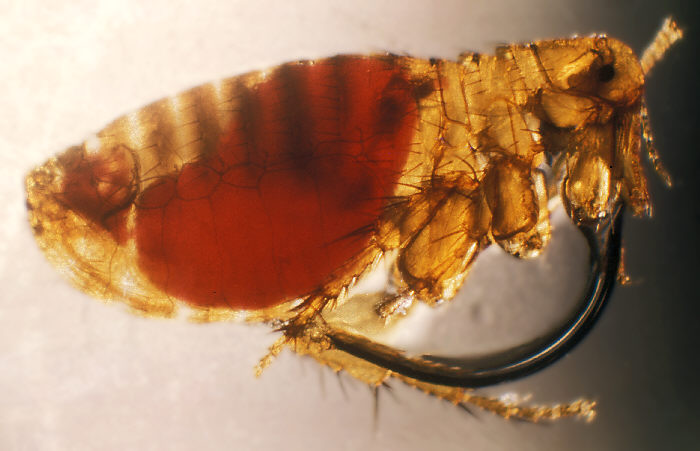By NewsDesk @bactiman63
Just about two weeks since reporting their first human plague case of the year in Santa Fe County, the New Mexico Department of Health (NMDOH) reports the death of a man in his 20s from Rio Arriba County of septicemic plague, the first human plague death in New Mexico this year.

Image/CDC
The Rio Arriba County man died after being hospitalized. An environmental investigation will take place at the person’s home to look for ongoing risk to immediate family members, neighbors and others in the surrounding community.
Plague is a bacterial disease of rodents and is generally transmitted to humans through the bites of infected fleas but can also be transmitted by direct contact with infected animals, including rodents, wildlife and pets.
Pets that are allowed to roam and hunt can bring infected fleas from dead rodents back into the home, putting household members at risk.
“Plague activity in New Mexico is usually highest during the summer months, so it is especially important now to take precautions to avoid rodents and their fleas which can expose you to plague.” said Department of Health Secretary Kathy Kunkel.
To prevent plague, the Department of Health recommends that you:
- Avoid sick or dead rodents and rabbits, and their nests and burrows.
- Prevent pets from roaming and hunting
- Talk to your veterinarian about using an appropriate flea control product on your pets as not all products are safe for cats, dogs, or your children.
- Clean up areas near the home where rodents could live, such as woodpiles, brush piles, junk and abandoned vehicles.
- Have sick pets examined promptly by a veterinarian.
- See your doctor about any unexplained illness involving a sudden and severe fever.
- Put hay, wood, and compost piles as far as possible from your home.
- Don’t leave your pet’s food and water where rodents and wildlife can get to it.
Symptoms of plague in humans include sudden onset of fever, chills, headache, and weakness. In most cases there is a painful swelling of the lymph node in the groin, armpit or neck areas. Plague symptoms in cats and dogs are fever, lethargy and loss of appetite. There may be a swelling in the lymph node under the jaw. With prompt diagnosis and appropriate antibiotic treatment, the fatality rate in people and pets can be greatly reduced. Physicians who suspect plague should promptly report to the New Mexico Department of Health.
This is the first human plague-related death in New Mexico since 2015.
There have been two animal plague cases in New Mexico in 2020: one in a dog and one in a cat. Both were from Santa Fe County.
- Facemask efficacy for filtering expelled droplets during speech: Evaluation
- Libertarian Presidential candidate, Jo Jorgensen, gets bitten by a bat, receives rabies PEP
- Virginia reports 4th EEE case in horse, This one in Isle of Wight County
- Onion Salmonella Outbreak Explodes: 85 Hospitalized, 640 Sick in US
- 239 Canadians Sick in Salmonella Outbreak Linked to Onions
- France: 1st dengue local transmission reported in 2020
- Cyclospora Outbreak in Texas
- Second Jamestown Canyon Virus case reported in New Hampshire
- Chagas disease treatment, Lampit, receives FDA approval for use in children
- China: Plague death recorded in Baotou, Inner Mongolia

